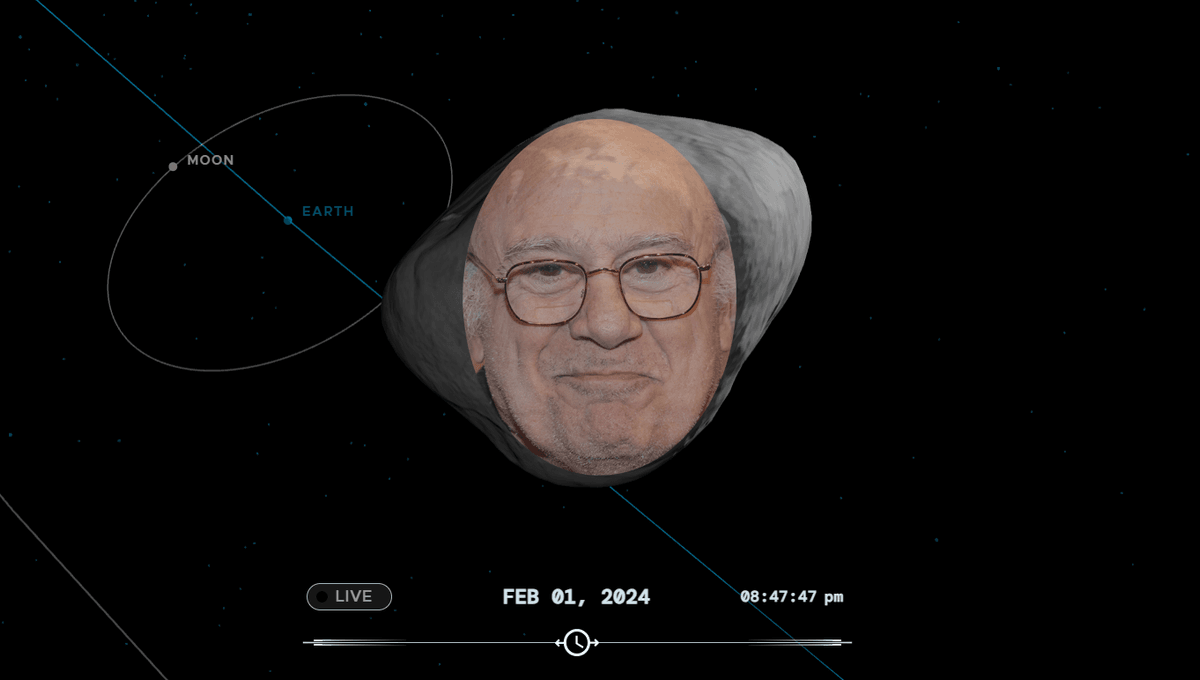
A potentially hazardous asteroid the size of a stadium is set to make a flyby of Earth tomorrow at a distance of around 2,850,000 kilometers (1,770,000 miles). Space rock fans can view a live stream of the asteroid, courtesy of the Virtual Telescope Project.
Asteroid 2008 OS7, as the name suggests, was first seen during the Catalina Sky Survey on July 30, 2008. The asteroid, which orbits the Sun every 2.64 years, is about 284.8 meters (934.4 feet) in diameter according to NASA, or around 194 Danny DeVitos (158 Arnold Schwarzeneggers) across.
There is nothing to worry about from the asteroid, which is set to pass at less than 0.05 astronomical units (AU) from the Earth. Though this may not sound far, one AU is the distance between the Earth and the Sun, and the asteroid will pass by harmlessly at around 7.4 times the average lunar distance.
“We don’t need to worry about it too much as this asteroid will not enter Earth’s atmosphere, while this will still approach close to the Earth,” Dr Minjae Kim, Research Fellow at the Department of Physics at the University of Warwick added to PA.
You can watch it miss us on the Virtual Telescope Project website, with the closest approach taking place at 14:41 UTC on February 2, 2024.
NASA and other observatories track the orbits of objects discovered in the Solar System, keeping a particular eye on “near Earth objects” 140 meters (460 feet) and larger that could cause devastation if they were to cross paths with our planet. So far, astronomers have been able to predict the orbits of known objects up to about 100 years in the future. The good news is that “no known asteroid larger than 140 meters in size has a significant chance to hit Earth for the next 100 years,” according to NASA.
Though we are discovering new objects all the time – sometimes just before they hit – another method has found that we should be safe for the next 1,000 years from the objects we do know about.
“Assessing the impact risk over longer time scales is a challenge since orbital uncertainties grow. To overcome this limitation we analyze the evolution of the Minimum Orbit Intersection Distance (MOID), which bounds the closest possible encounters between the asteroid and the Earth,” the team behind the study explained in their paper last year. “The evolution of the MOID highlights NEOs that are in the vicinity of the Earth for longer periods of time, and we propose a method to estimate the probability of a deep Earth encounter during these periods.”
The probability of being hit before the year 3000 is looking pretty low according to the team, with the most likely object to hit us – 7482 (1994 PC1) – having only a 0.00151 percent chance of a close encounter, approaching the Earth closer than the orbit of the Moon.
Source Link: Potentially Hazardous Asteroid 194 Danny DeVitos Wide Will Fly Past Earth Tomorrow